Fastening timber to the wall: tips and tricks
Timber at one time was one of the most popular building materials, which was used in construction. Recently, however, it began to take more often as an auxiliary element, combining with the latest developments or other assembly systems.
That is why the question of how to fix the timber with your hands on a different surface is very popular with novice builders.
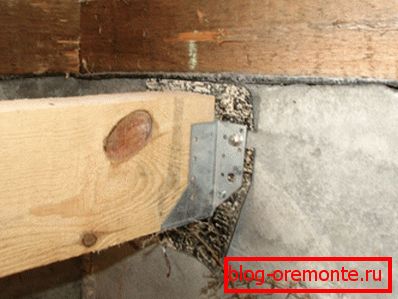
Types of installation
At this time there is a lot of different mounting material, thanks to which you can make any connection of various elements. All of them differ in their technical characteristics and application. At the same time, the installation manual clearly regulates their use when working with a bar.
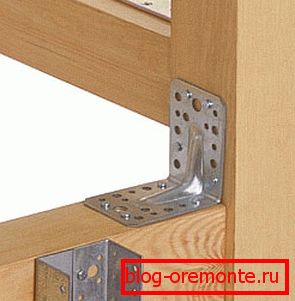
Corner
This type of fastener for timber is a metal corner with holes in both planes. It is made from those types of material that are not susceptible to oxidation and have sufficient strength.
At the same time, the metal corners for fastening a timber must withstand a weight twice as large as the element that it will fix.
- To begin with, it is necessary to apply a marking on the surface that will correspond to the contours of the beam. In its manufacture it is necessary to use not only the measuring instrument, but also the water level with a plumb.
- After that, with the help of nails, self-tapping screws or impact dowels, the corners are fixed. It should be noted that at this moment it is not necessary to create a strong connection, so that later it would be possible to make an adjustment.
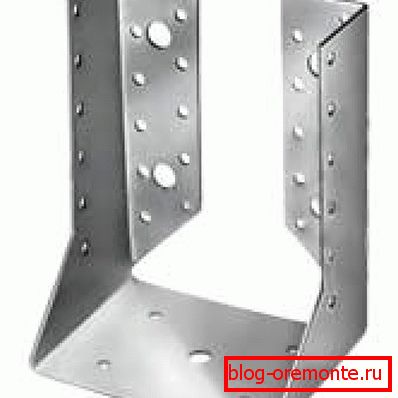
- Next to the surface put the timber and connect it with screws with corners. At the same time fasteners tightened completely.
- At the final stage of installation make an adjustment. To do this, the corner for fastening the beam begin to clamp tightly with fasteners, adjusting it so that the material will stand in accordance with the marking.
Tip! This type of installation is well suited for brick and concrete structures, but the reliability and strength of the finished connection depends entirely on the quality of the corners and their ability to withstand loads.

Interconnection
When building a house of this material, it is often necessary to fasten a bar to a bar.
At various times, many methods were used for this, but in modern construction they are presented in the form of their combination.
- At first, special grooves are made on the uneven bars, which, when connected to each other, form a lock.
- Next, fasten them together, and the lock itself is additionally fixed with a large nail or wooden cotter pin, through a pre-made hole.

- Some masters prefer to glue such joints, but it is believed that such a measure is unnecessary. However, if as a result of mounting the material an angle forms, then it is worthwhile to put rolled hemp as a sealant and insulator into the lock.
- For the reliability of these types of compounds often used auxiliary material. It can be a metal bracket for fastening a timber. It is driven into both materials, tightening them together.
Tip! It is not necessary to use all types of fasteners for such an installation, but it is necessary to do this at critical sections or corners. As a result of such actions, the design will receive additional strength and stability.
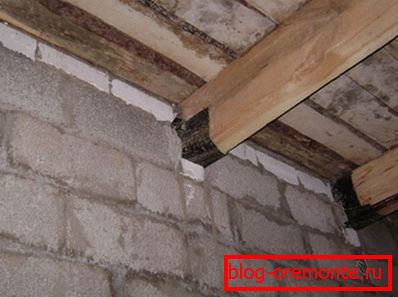
Concreting and masonry
Usually the fixing of the timber to the brick wall is carried out with the help of corners. However, it is often necessary to place heavy loads on the material, and this method of joining cannot provide this. This problem is associated with the organization of floors or in the arrangement of floors from a bar in the house.
In such cases, the beam is built into the wall during its manufacture:
- To do this, the material is first treated with moisture-proof impregnation, which not only protects it, but also increases adhesion.
- Then it is installed on the wall in the place where it is planned to be installed.
- Then continue to build a wall, taking into account the immured material.
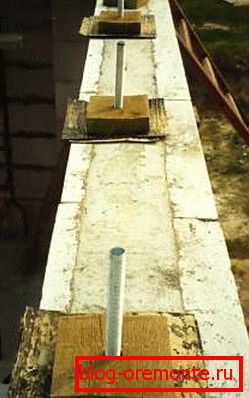
It should be noted that this method is also suitable for fastening a timber to concrete. In this case, it is used as an additional reinforcing element. If the construction of the house assumes that the walls will be erected of slabs, then a concrete belt is created to organize the overlapping and installation of the timber.
Tip! This method can be considered one of the most reliable, because it does not weaken the material and creates a strong connection with the supporting structure.
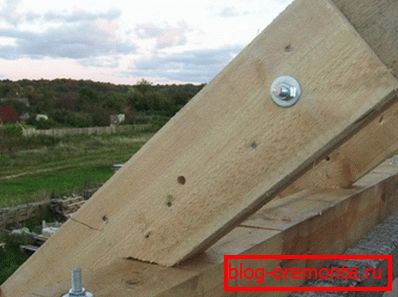
Roof
Considering the fact that the lag is fastened to the wall of a house from a timber by connecting them by means of a carved lock and a bracket, many builders make the mistake that it is also possible to arrange docking on the roof. However, this design suggests a completely different approach, since it has its own exploitation conditions.
First of all, it should be noted that the type of connection of all elements of the roof should be developed in accordance with the project. They must withstand heavy loads and be strong enough. Therefore, to fix them, they use not only nails and locks, but also staples.
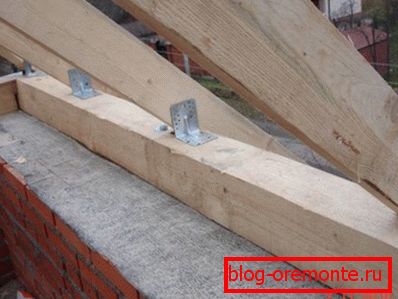
A typical attachment of rafters to the ridge bar is performed by installing them at an angle of 45 degrees and connecting them with a fastener. Quite often, when creating the roof, bolting systems are used, which can provide increased reliability and quality of all components. However, even with their use it is better to strengthen the structure with staples.
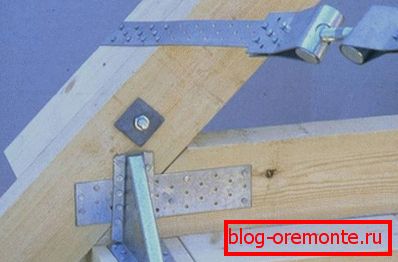
Currently, there are many different mounting elements for the implementation of various projects of similar structures. They are sold in the form of finished products, and their price is quite affordable even for people with low income.
Tip! In the manufacture of the roof should not make their own changes to the project. This may lead to a weakening of the structure and reduce its service life.
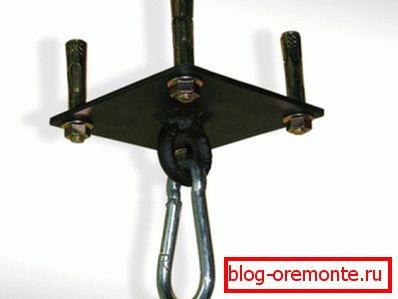
Suspension
Quite often when finishing a room there is a need to fix the timber at a short distance from the ceiling. This may be associated with various design solutions or with decorative elements.
It is possible to carry out such fastening of a bar to a concrete ceiling by means of special suspensions. They are purchased in specialized stores in accordance with the weight of the material that they will need to carry.
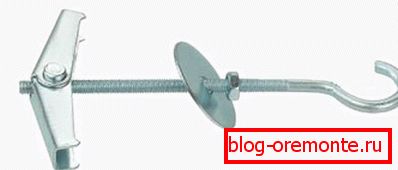
Suspension фиксируют на потолке при помощи ударных дюбелей, а на брус монтируют специальный крепеж. Далее соединяют оба элемента и в результате получают необходимое соединение. Высоту материала при этом регулируют системой подвеса, которая позволяет осуществлять фиксацию на необходимом уровне.
It is believed that this method of installation is not reliable, but in practice it turns out that it can withstand significant loads. However, if this material is used only as a decor, then it is possible to mount the imitation beam to the wall, which will create the desired effect without the risk of falling on the head.
For such elements there are their own fixation systems, which are designed for a specific product. They are usually supplied with the material itself.
Tip! If it is possible to avoid this method of installation, then it should be used. Usually builders just mutate such bars into the wall, and suspensions are set for reinforcement or beauty.

Conclusion
In the presented video in this article you will find additional information on this topic. Also on the basis of the text that is set forth above, it can be concluded that there are a lot of different principles of joining and fastening a beam with other materials and among themselves. At the same time, they all have their own characteristic scope, features and strength.